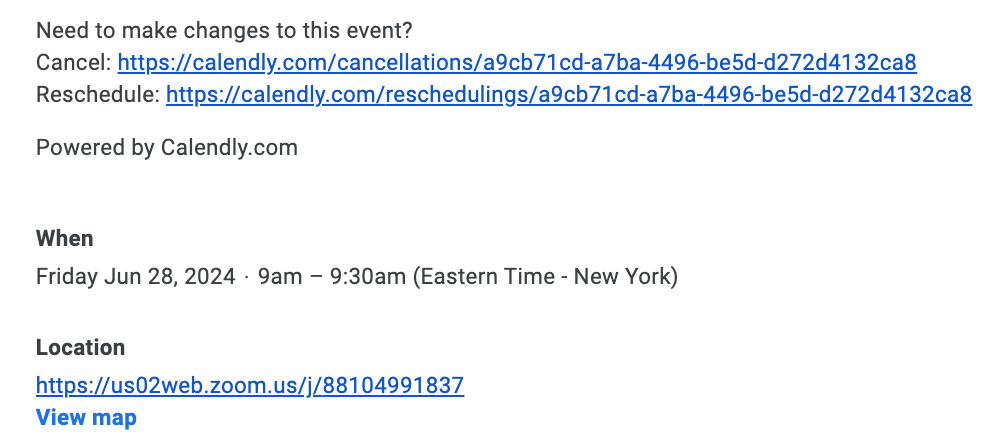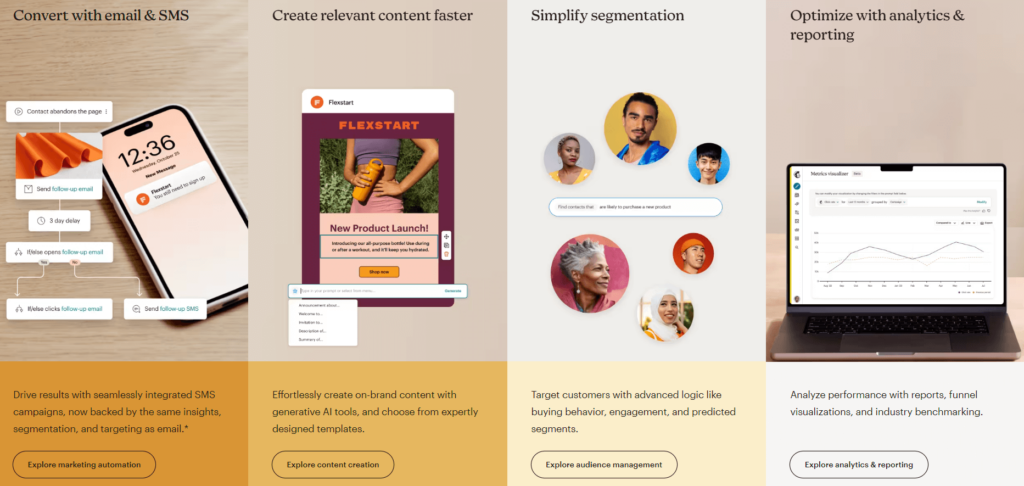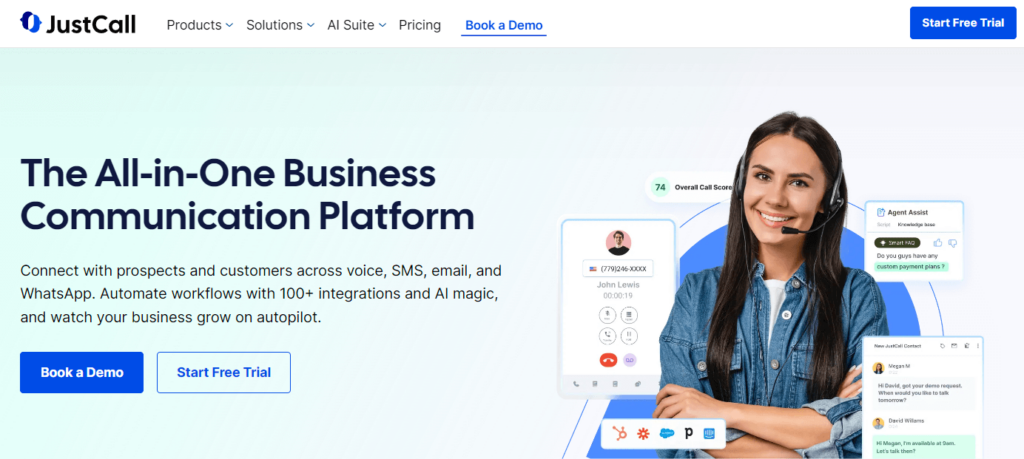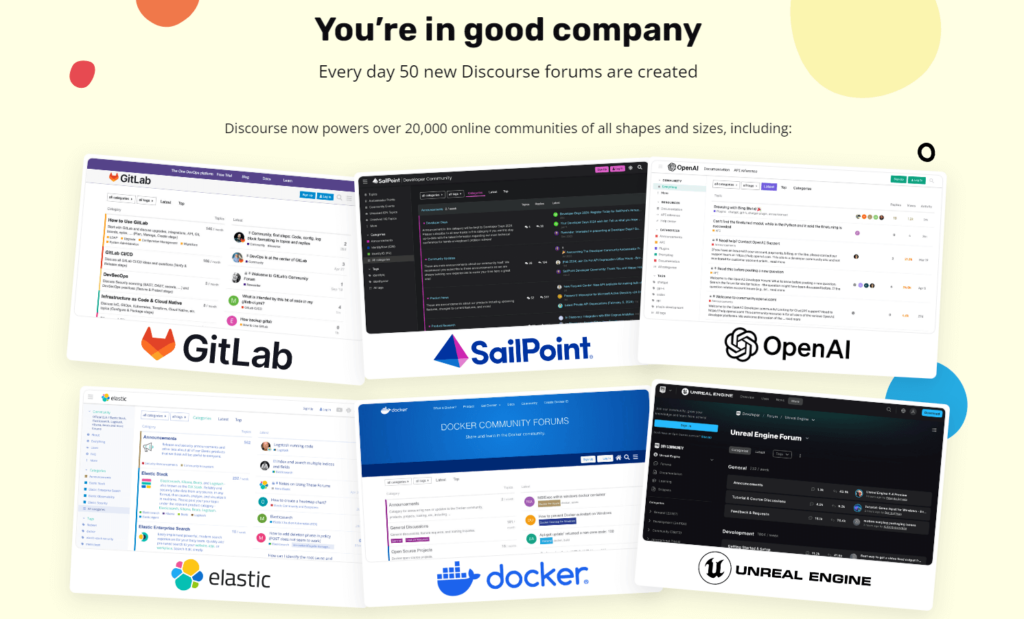Customers should always come first, but that can be easier said than done. When you’re a support manager or team lead at a startup, you’re keenly aware that resources are finite and time is limited.
If you’ve made it here, you’re probably wondering: What kinds of customer communication tools are available? How can they help you save time and streamline workflows? And how do you decide which options are right for your specific niche and buyers?
In this post, we’ve compiled seven solutions to check out. These customer communication tools are scalable, easy-to-use, budget-conscious, and cover a lot of ground for growing businesses.
1. A Helpdesk Built for Small Businesses
Phone calls, emails, social media inquiries — your business probably deals with many different channels. Keeping all of them organized can be a hassle, and prevent you from offering top-quality customer service.
Can you view everything in an organized place? Do you have a streamlined workflow? Or does your team have to jump between platforms and lose efficiency as a result?
Helpdesk software is one of the most indispensable customer communication tools. Buyers expect individualized communication and a great experience, and an easy-to-use helpdesk can serve as the backbone for connecting your business and customers.
A helpdesk directs communication from multiple support channels into a shared, multi-user inbox:
The term “ticketing system” is often used interchangeably with “helpdesk,” as both funnel customer service requests into one place as “tickets” or “cases”. However, ticketing systems are often more restrictive, while helpdesks provide everything your support team needs to communicate with one another and with customers.
Of course, many popular helpdesk tools aren’t well suited to smaller businesses. They can be difficult to set up and learn, over-complicated with unnecessary bells and whistles, or poorly supported (unless you pay for premium service).
That’s why we built Groove! Our helpdesk is an easy-to-use yet powerful solution for customer communication. With it, you can manage, delegate, and organize conversations using:
- Easy workflows
- Automation options
- Customizable rules
- Templates and canned responses
- Internal notes
- Ticket history and customer data
At the end of the day, the goal of your business’ support team is to promptly address customer concerns and inquiries. Groove provides important features to facilitate that work, but still feels familiar if you’re used to an email client like Gmail or Outlook.
Groove is also a scalable platform, so it grows with your company. Plus, it integrates with a lot of popular customer communication tools, including many of the ones discussed below. That means it serves as the hub for a comprehensive customer service strategy.
2. Scheduling Software
When it comes to support, some customers still prefer a human touch. And many businesses benefit from providing voice/video chat options, especially if you offer demos or encounter a lot of complex issues that are hard to address via text.
Sometimes the greatest insight can come from speaking directly to clients face-to-face (or screen-to-screen) instead of over email. An informal setting is an ideal landscape for honesty and open communication.
Rather than play phone tag or waste time on back-and-forth emails, scheduling software helps buyers and clients easily select times to chat with you. For example, Calendly allows you to send customers a link so they can select available times at their convenience:
Reminders and notifications are dealt with automatically. Plus, the UX is intuitive, so it’s easy to get set up. Zoom meeting links, reference material, and phone numbers can be included during the scheduling process:

With free and low-cost options, Calendly is a solid choice if you need a schedule planner that’s flexible and streamlined. It also supports several payment gateways (if you offer paid consulting sessions, for example), and integrates with other customer communication tools like Groove.
3. Social Media Platforms
Social media is a completely free communication and marketing channel for your business. Many companies focus on the latter, but the former is just as consequential.
Even if you’re not targeting social media audiences with ads or other marketing strategies, users will reach out if you have any sort of business page. Many people find contacting companies through Instagram, Twitter, or Facebook convenient, so it’s crucial to keep that option open for them.
Often, customers will ask for the same support via social platforms that they would through email correspondence. However, they expect results a lot sooner. You can avoid the need to monitor each platform constantly by connecting them to your helpdesk:
As a means for delivering omnichannel support, this saves you time and ensures that no messages go missing. Plus, it means you don’t have to direct customers who reach out through social media to send you an email – if that were their preferred channel, they’d have done so already.
With Groove, when customers message you through social media channels like Facebook Messenger, they’ll immediately show up as conversations in your support inbox. If you’ve been wary of using social media platforms as customer communication tools due to the time investment, this simplifies your workflows and lets you be more present for your audience.
4. NPS Tracking Tool
In the past, we’ve spoken at length about the value in sending out a Net Promoter Score (NPS) survey to your customers. NPS functions as a “snapshot” of customer satisfaction. It’s one of the easiest metrics to implement and measure, and illuminates many aspects of the customer journey.
More specifically, it measures the likelihood that a customer will recommend your product or service, and enables them to provide actionable feedback:
A platform like Delighted can integrate with your helpdesk to make leveraging this metric simple. NPS is calculated based on responses to a simple question, as follows:
- Customers respond to a single question survey, which you can automatically send out via Groove.
- They rate your product/service, and send back written feedback.
- The feedback appears in your dashboard, where you can see both the basic metrics and the detailed responses.
Your customer service team can respond to good and bad reviews alike, or use the internal note Delighted adds to provide tailored customer service. This kind of feedback is vital for improving the overall customer experience and making sure people feel heard.
5. Email Marketing Platform
While technically a promotional tool, email marketing can also be used by your customer support team for proactive communication.
You can send out emails about scheduled maintenance, downtime, product updates, or new features to current customers. Depending on your platform, you may be able to create segmented lists as well. This lets you offer highly-specific communications – for example, sending out details on how to use new features only to the buyers of a specific product.
Of course, you’ll need to build up an email list first. For that, we’d recommend Mailchimp:

This particular platform is affordable and easy to learn. Plus, it’s useful for more than just email marketing campaigns. Integrations allow you to access subscriber lists directly from your helpdesk, where you can also edit subscription statuses:
Integrating Mailchimp with Groove also enables you to:
- Identify customer mailing lists subscriptions from every ticket
- View customer profiles for mailing lists
- Subscribe/unsubscribe customers from mailing lists, without leaving the inbox
6. Business Phone System
Phone calls may seem like an outdated form of customer service. But it’s still an option that many customers expect, especially if you’re an online-only business.
If your company does offer phone support, it’s worth investing in a tool that optimizes this channel. It’s also a good idea to make sure it’s integrated with your other customer communication tools. Calls don’t leave a paper trail (usually), so it can be easy to miss or forget to follow up on them.
A good place to start is with JustCall, a cloud-based solution:

It offers a wide range of features and options, including:
- Inbound and outbound calling
- Voicemail transcription
- SMS & MMS
- Live call monitoring
- Call/SMS analytics
- Intelligent routing
- APIs and webhooks
JustCall can also connect to your helpdesk, to keep all communications centralized. It manages customers, call records, and logs, then synchronizes everything with Groove:
Your team’s call logs and recordings are accessible from your Groove dashboard and shared mailboxes. Conversations are matched with existing customer profiles, which is especially useful when the same customers reach out through multiple channels. You can see their full histories, and provide more effective, personalized service.
7. Online Forum
While support forums may also seem a bit antiquated, you only have to look at the success of platforms like Reddit and Quora to understand the potential customer value. Community message boards are still alive and well.
Participating in communities your target audience frequents is a great way to grow your brand. However, you can also benefit from building your own community space.
Forums are excellent customer communication tools. They:
- Offer a dedicated place for customers to hear updates, ask questions, air concerns, and so on
- Allow for self-service – dedicated users can help answer questions for you, reducing support inquiries and tickets
Fortunately, these days there are platforms that let you manage a community easily and cheaply. If you don’t offer this channel for your customers yet, Discourse is a solid option:

Thousands of brands use Discourse for forum creation, including Unreal Engine, Asana, and Zoom. Because of its user demographics, it’s an especially good fit for SaaS companies and other tech-focused small businesses. Discourse offers a free open-source version, as well as plans with more customizable functionality.
Once set up, a forum is practically self-sufficient. If your community grows large enough, you can even source moderators from among its users. However, we’d recommend maintaining an official presence and making sure your audience knows the forum is an open line of communication right to the source.
House All Your Customer Communication Tools in One Place
The more customer communication tools you make use of, the more available you are to potential and current buyers. At the same time, managing many different platforms takes time away from other crucial tasks.
We’d recommend looking at a few options at a time, based on what’s most relevant to your business’ unique needs. Start with the essentials, and work your way up to the nice-to-haves. It’s a good idea to survey your current customer base first, to see what communication channels they prefer.
Plus, don’t forget that many of the above solutions can be housed under one roof with Groove! Our customer support dashboard keeps everything in one place, so you can communicate effectively and efficiently no matter how people reach out.




